The Victorinox Pioneer range is renowned for its robust and well-designed knives, favored by those who appreciate quality and functionality. Within this exceptional series, the Pioneer X and Pioneer Farmer stand out as three-layer models, each offering an extra tool compared to their two-layer counterparts. For many enthusiasts, the choice between the Pioneer X Alox (model 0.8231.26) and the Pioneer Farmer Alox (model 0.8241.26) often boils down to a single question: scissors or saw?
Having previously explored the single and two-layer options within the impressive 93mm Pioneer lineup, it’s time to delve into these three-layer powerhouses. The Alox series, built around the popular Pioneer, has cultivated a dedicated following thanks to its exceptional construction and thoughtful design. The tools in the Pioneer range are noticeably thicker than those found in Victorinox’s Cellidor-scaled knives. Rooted in military heritage, the Pioneer knives are built for resilience and capable of tackling demanding tasks. Beyond their ruggedness, these knives possess an undeniable aesthetic appeal. Both the Pioneer X and Farmer fall into Victorinox’s ‘medium knives’ category. They feature stronger backsprings and tools that may initially feel stiff to open, sometimes leading to a broken nail in the early days. However, with consistent use, these tools become smoother and easier to access.
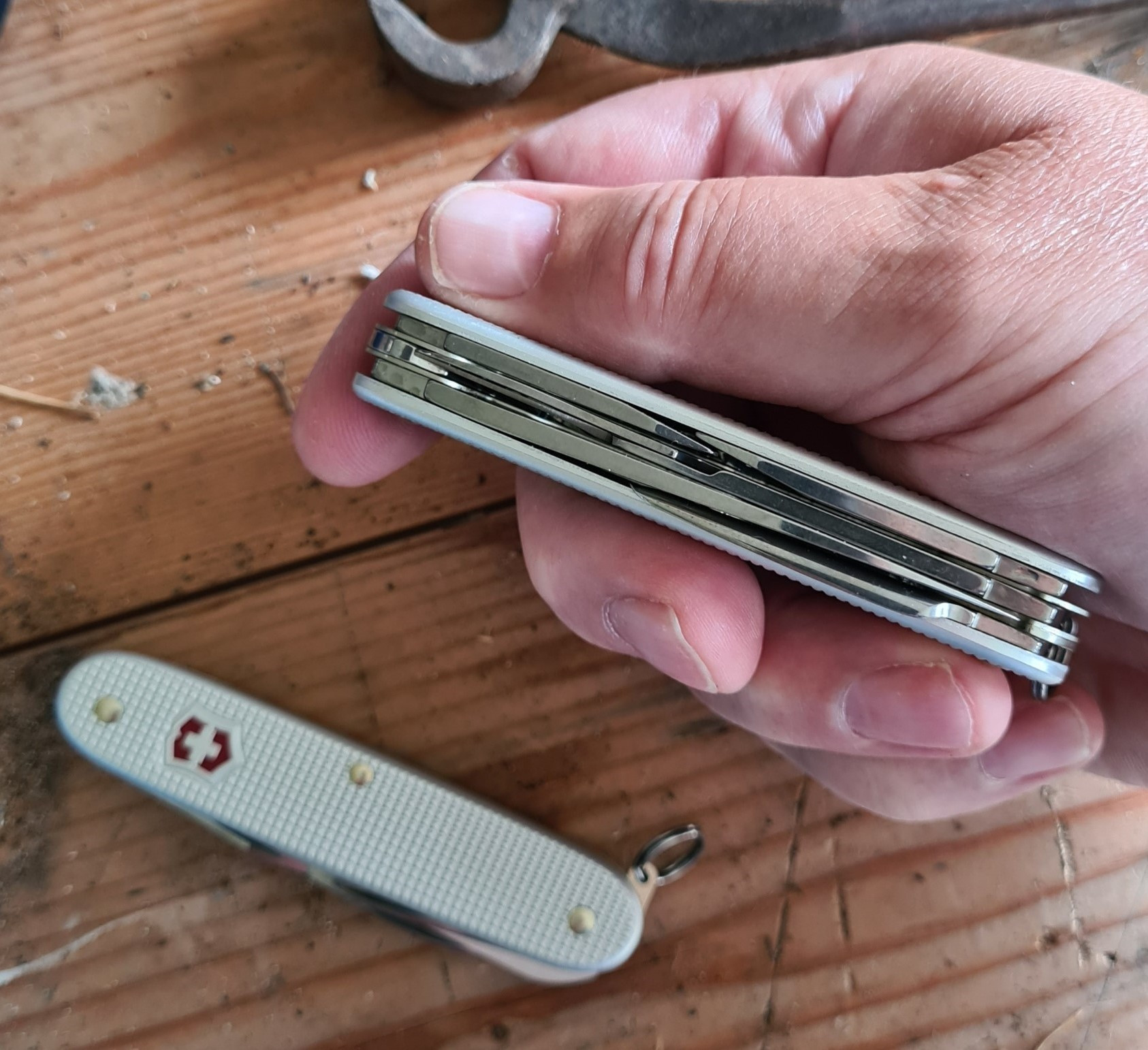 93mm three-layer alox knife in the hand
93mm three-layer alox knife in the hand
Victorinox Pioneer X Alox knife held in hand, showcasing its 93mm size and three-layer construction.
The 93mm length of the Alox knives strikes a comfortable balance in hand. While some users might prefer the slimmer profile of the 12mm two-layer models over the 14mm thickness of the three-layer options for intricate tasks, the 2mm difference is often negligible and largely a matter of personal preference. Many appreciate the substantial feel of the thicker three-layer knives. For most everyday tasks, the thickness difference is inconsequential, becoming more noticeable only during prolonged use. The maximum width measures 22.70mm at the spine of the main blade and 18.90mm across the scales.
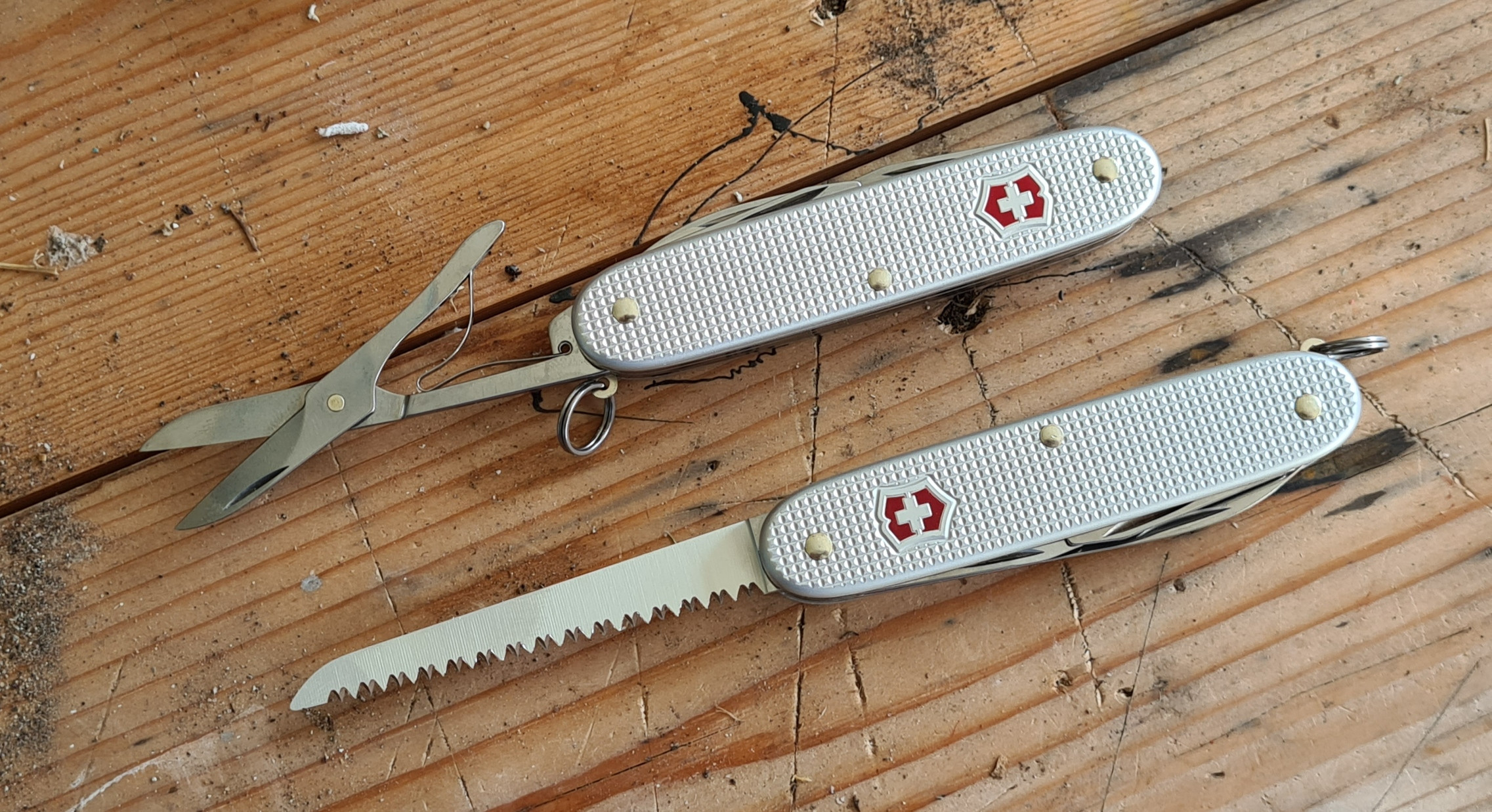 The Victorinox Pioneer X and Farmer differ by just the one tool
The Victorinox Pioneer X and Farmer differ by just the one tool
Comparison of Victorinox Pioneer X (top) with scissors and Pioneer Farmer (bottom) with saw, highlighting the single tool difference between the two models.
Weighing 94g for the Pioneer X and 86g for the Farmer, both knives feature a 12mm diameter keyring. However, their size and weight make them unsuitable for keychain carry for most users. Pocket carry or utilizing Victorinox’s high-quality leather or cordura belt pouches are more practical carry methods. Alternatively, a length of paracord through the keyring, looped over a belt, can secure a pocket-carried knife and prevent loss. While both knives are suitable for Everyday Carry (EDC), the simpler and thinner two-layer Pioneer often proves more convenient. For urban EDC, the saw on the Farmer might be less practical, while the scissors on the Pioneer X become significantly more useful. However, for truly compact urban EDC, the scissors on the 58mm Victorinox Classic, often carried on a keyring, offer quicker and easier deployment.
 Three layer 93mm Pioneer X
Three layer 93mm Pioneer X
Close-up of the Victorinox Pioneer X Alox, showcasing its silver Alox scales and three-layer toolset including scissors.
 Two layer 93mm Pioneer
Two layer 93mm Pioneer
Image of the two-layer Victorinox Pioneer Alox, emphasizing its simpler tool configuration compared to the Pioneer X and Farmer.
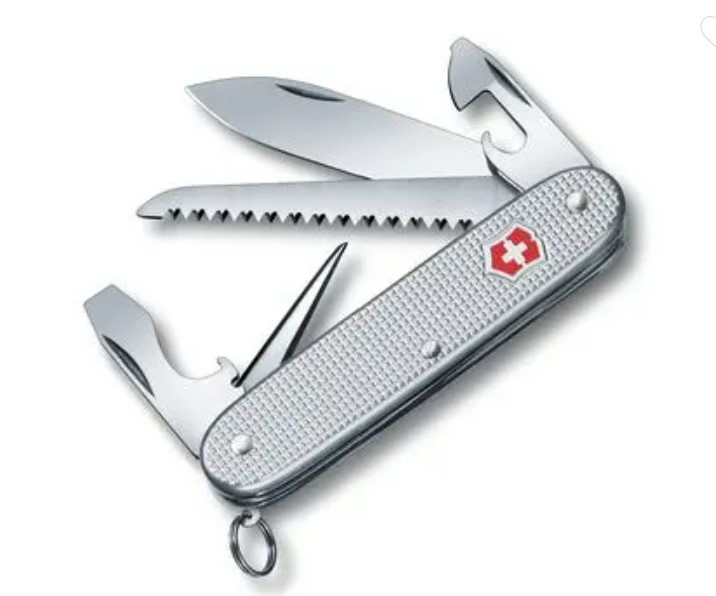 Three layer 93mm Pioneer Farmer
Three layer 93mm Pioneer Farmer
Victorinox Pioneer Farmer Alox knife, highlighting its three-layer construction and inclusion of a wood saw tool.
Compared to the classic Pioneer Alox, the Pioneer X and Farmer are only marginally more complex, with the addition of either scissors or a saw being the sole differentiator. Another three-layer variant, the Pioneer Harvester, now known as the Victorinox Swiss Army 7, offers a different tool configuration. This model features a saw (like the Farmer) but replaces the can opener with a pruning blade. This potentially useful alternative will be explored in a future review by Three Points of the Compass.
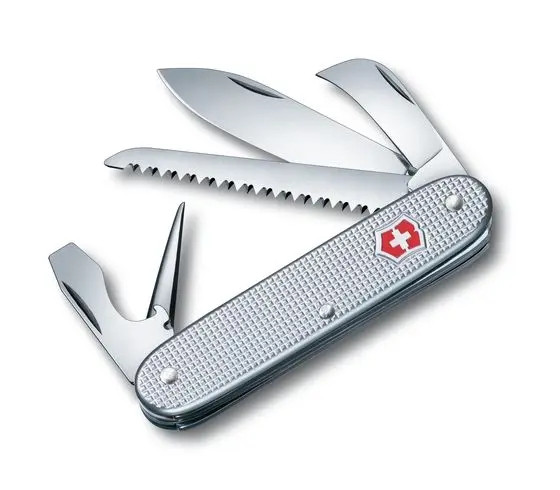 Three layer 93mm Pioneer Swiss Army 7
Three layer 93mm Pioneer Swiss Army 7
Victorinox Swiss Army 7 (formerly Pioneer Harvester), another three-layer 93mm Alox knife, featuring a pruning blade instead of a can opener.
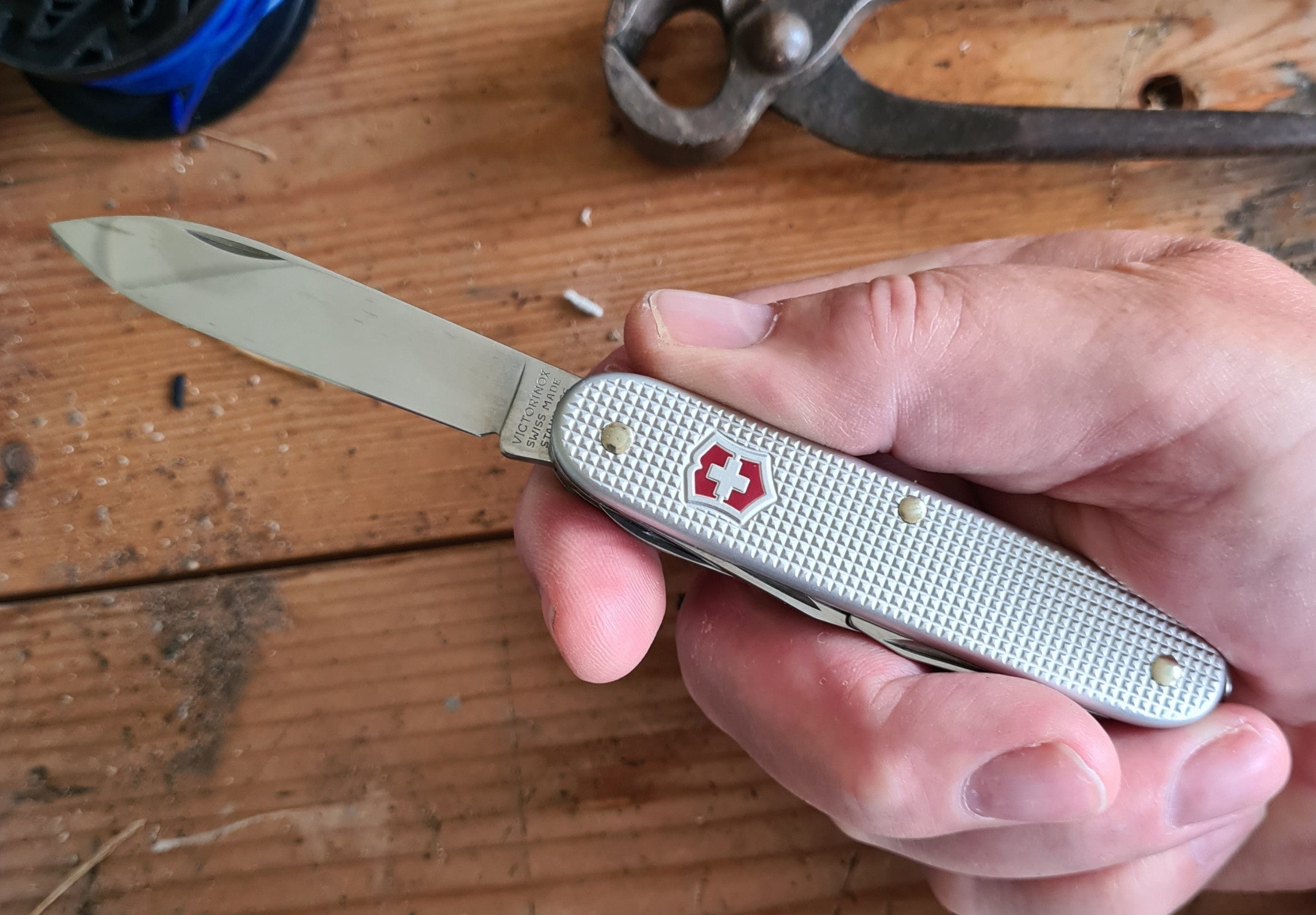 There is a decently sized main blade on both the Victorinox Pioneer X and Farmer
There is a decently sized main blade on both the Victorinox Pioneer X and Farmer
Close-up of the main blade on a Victorinox Pioneer X or Farmer, showing its drop-point shape and robust construction.
Both the Pioneer X and Farmer boast blades that are sharp right out of the box. These drop-point, v-ground blades are crafted from Victorinox’s proprietary 1.4110 ‘stainless’ steel alloy. This alloy, enriched with chromium and molybdenum, offers excellent corrosion resistance while maintaining a degree of carbon for good edge retention and ease of sharpening. While suitable for the vast majority of tasks, it’s a mid-range steel. Those seeking superior steel performance will need to explore higher-end options. The blades on both knives measure 68mm in overall length with a 60mm cutting edge. Being non-locking, they comply with current UK knife laws.
The spear-shaped blade found on both the Pioneer X and Farmer is slightly longer and thicker than blades on similarly sized non-Pioneer Victorinox knives. This robust blade design is a key characteristic of the 93mm Pioneer range, earning it Victorinox’s ‘sturdy’ designation. Despite being a folding knife, the blade is capable of handling fairly demanding tasks. The spines are 2.75mm thick, compared to the 2mm thickness of blades found on Victorinox’s 84mm range. The blades feature an asymmetrical shape to accommodate the reamer when folded, a design element that doesn’t compromise cutting performance.
[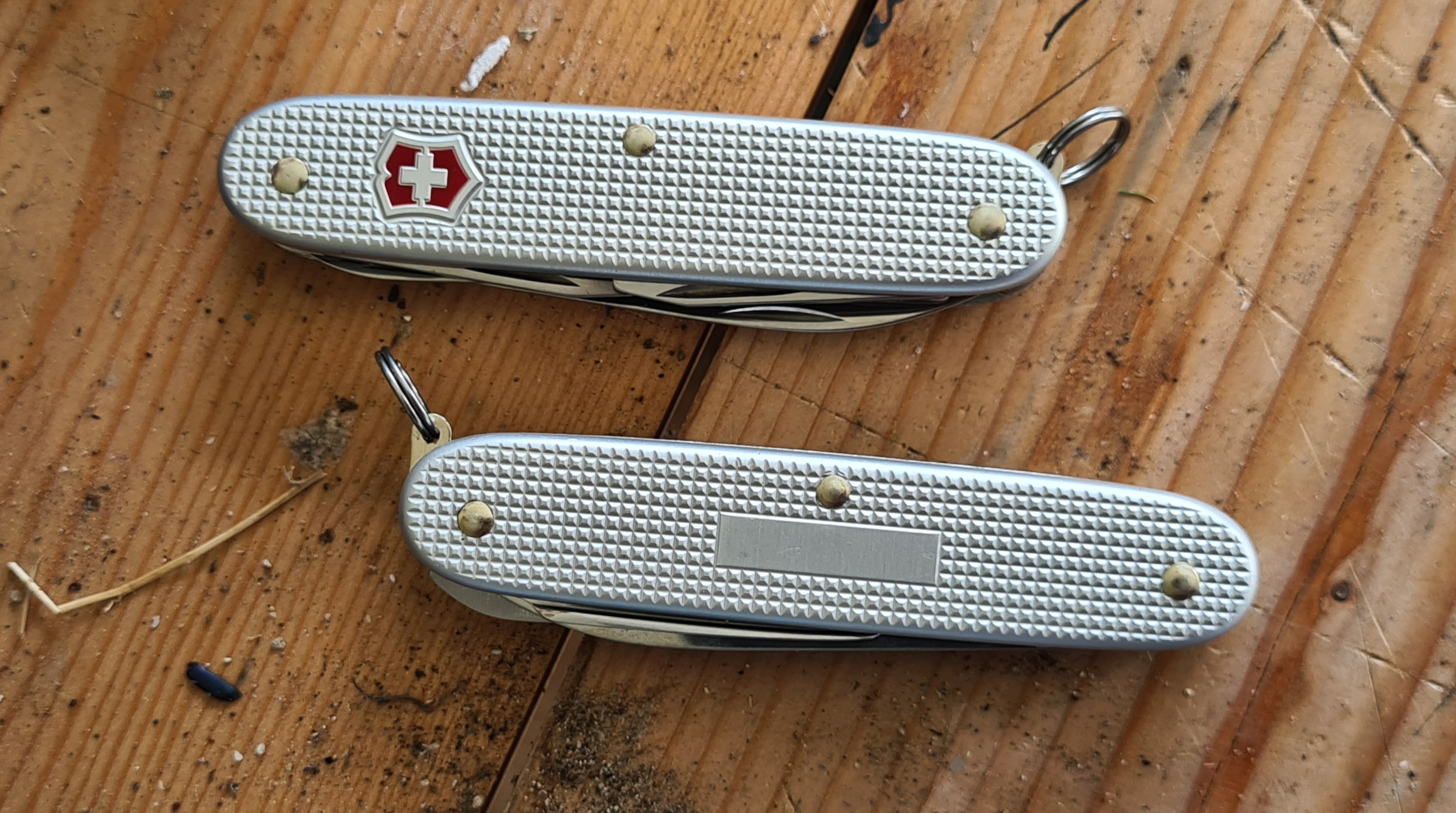 The two sides of the knives. Back scale has a small plate for engraving
The two sides of the knives. Back scale has a small plate for engraving
Asymmetrical blade shapes on Victorinox Pioneer X (top) and Farmer (bottom), designed to accommodate the reamer tool alongside the blade.
[ The two sides of the knives. Back scale has a small plate for engraving
The two sides of the knives. Back scale has a small plate for engraving
Both sides of the Pioneer X and Farmer knives, showing the Alox scales and the engraving plate on the back scale.
Both the Pioneer X and Farmer are equipped with a cap lifter/bottle opener and a can/tin opener. The cap lifter/bottle opener functions reliably. This tool also incorporates a wire bender/stripper, though its utility is limited for many users. More practical is the robust 6mm flat-tip screwdriver integrated into this tool. Larger and tougher than the screwdrivers on ‘medium-sized’ Cellidor Victorinox knives, it resists twisting under pressure. A half-stop position allows for 90-degree angle use, and its placement at the tool’s end enables significant torque application.
The can/tin opener, located at the opposite end of the tool, operates with a forward cutting motion. Simple to use when properly employed, it efficiently opens cans without unnecessary damage. This tool also includes a small 3mm flat-tip screwdriver, too small for eyeglasses but suitable for some Phillips head screws.
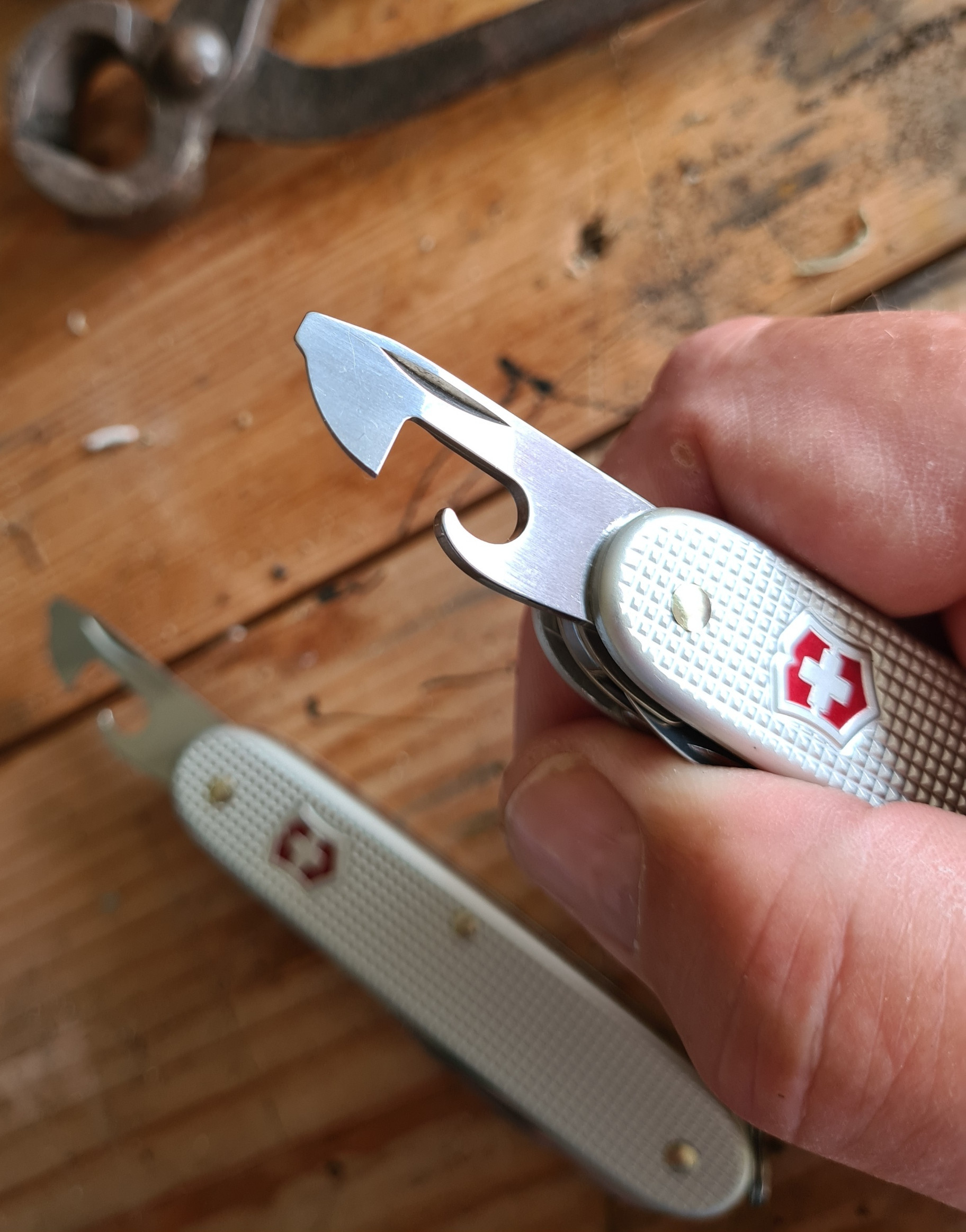 Can/tin opener on both Pioneer X and Farmer
Can/tin opener on both Pioneer X and Farmer
Close-up of the can/tin opener tool found on both the Victorinox Pioneer X and Farmer Swiss Army knives.
 Combination cap lifter and screwdriver on both Pioneer X and Farmer
Combination cap lifter and screwdriver on both Pioneer X and Farmer
Combination cap lifter/bottle opener and 6mm flat-head screwdriver tool present on both the Pioneer X and Farmer models.
The scissors are the defining feature of the Pioneer X, just as they are in the four-layer Farmer X. While the three-layer Farmer has a long history dating back to the 1950s, the Pioneer X debuted in 2016, fulfilling the desire of enthusiasts who missed larger scissors on Alox models. The absence of larger scissors stemmed from the discontinued repair of a factory tool used for 84mm Victorinox scissors, making them a missed feature. The Pioneer X marked the first inclusion of scissors on a 93mm Alox knife, though they were already present on some 91mm models. Scissors on 91mm and 93mm knives are virtually identical, differing only in nail nick placement.
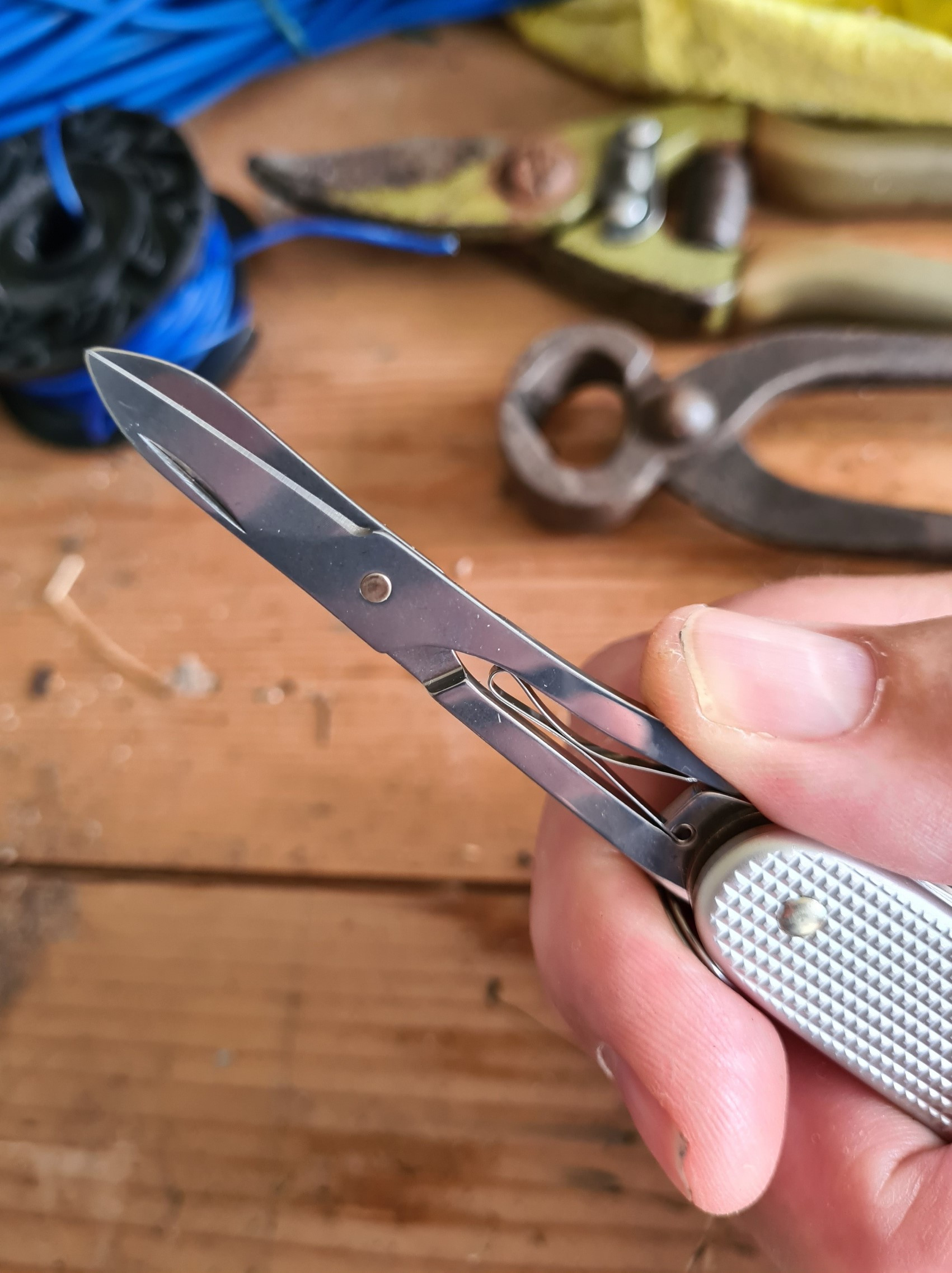 Closed scissors on Pioneer X
Closed scissors on Pioneer X
Closed scissors tool on the Victorinox Pioneer X, a key feature distinguishing it from the Farmer model.
The scissors are exceptionally well-made and highly functional. Non-serrated with 27mm long cutting edges, they can be sharpened with care. The 2mm wide thumb tab can become slightly uncomfortable during extended use or when cutting tougher materials, as these are still relatively compact scissors, not shears. However, they capably handle most reasonable tasks and feature pointed tips for piercing materials before cutting. A small leaf spring between the handles provides springiness when opening; these springs can occasionally break or detach, but replacements are available.
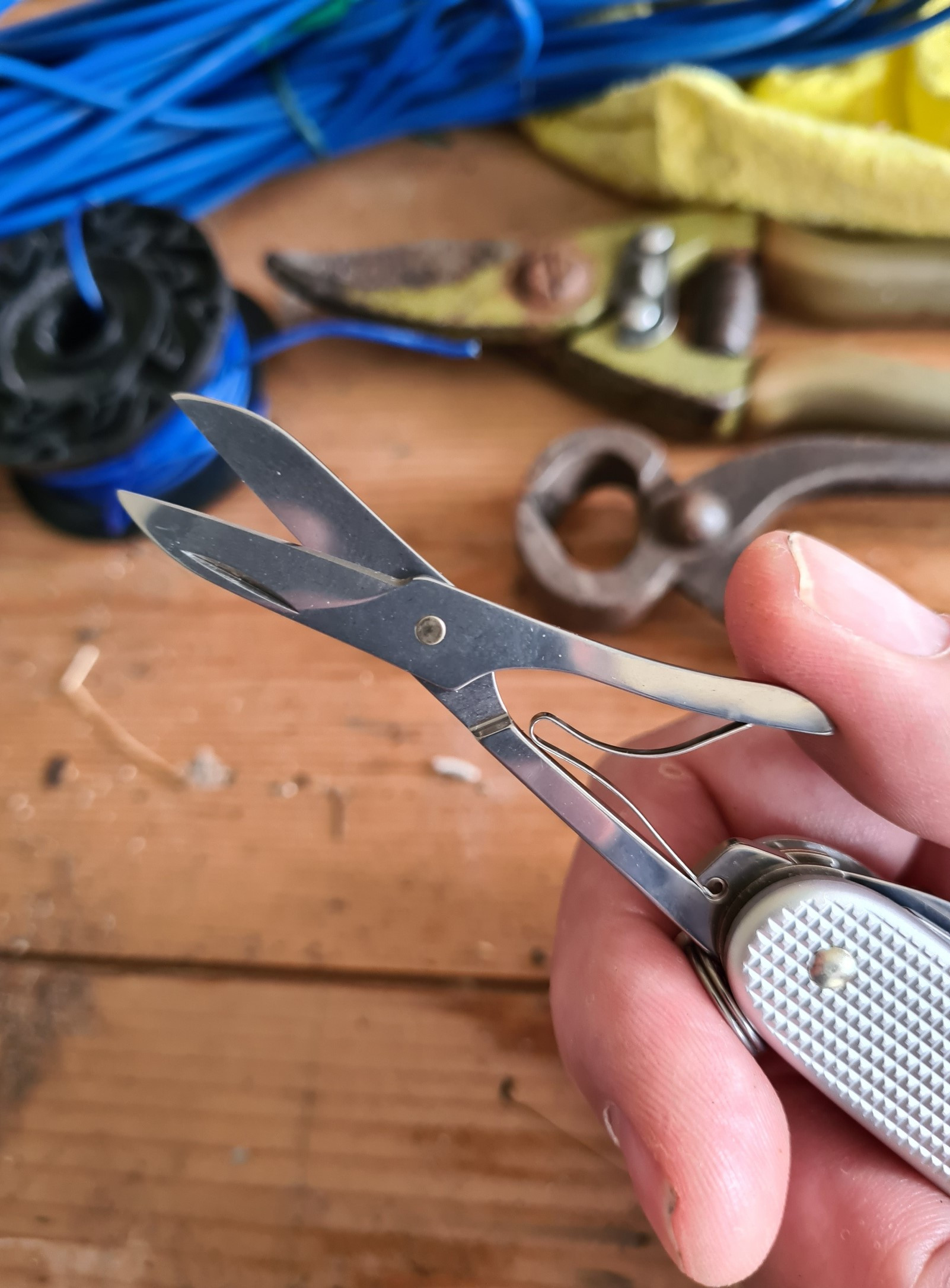 Open scissors on Pioneer X
Open scissors on Pioneer X
Open scissors tool on the Victorinox Pioneer X, demonstrating its functionality and spring-loaded mechanism.
The Pioneer X’s popularity is underscored by its recognition as the Multitool.org Multitool Of The Year in 2016, garnering over 34% of votes across ten multi-tool options.
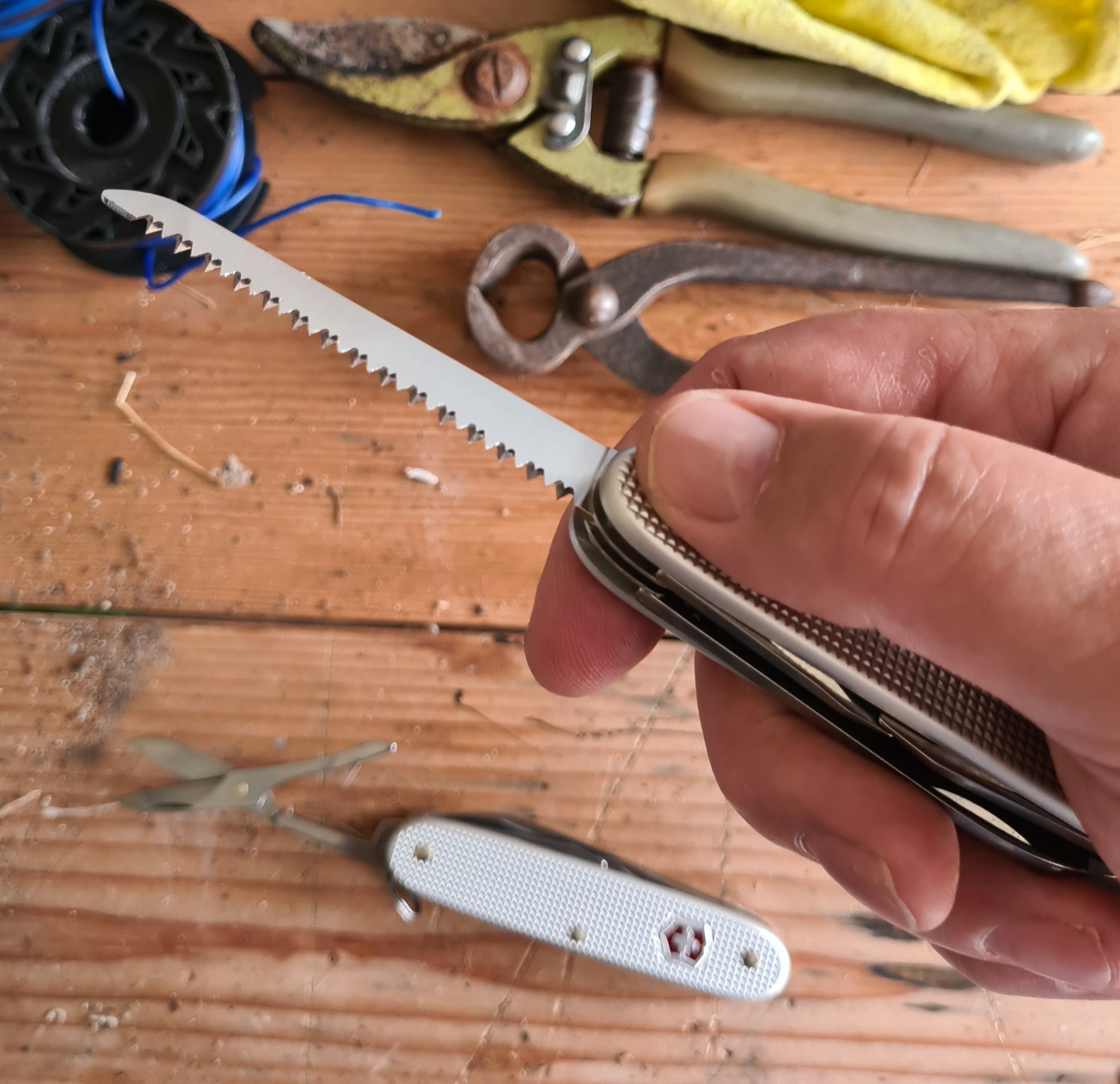 Decently sized folding saw on Pioneer Farmer
Decently sized folding saw on Pioneer Farmer
Folding wood saw tool on the Victorinox Pioneer Farmer, designed for outdoor and utility cutting tasks.
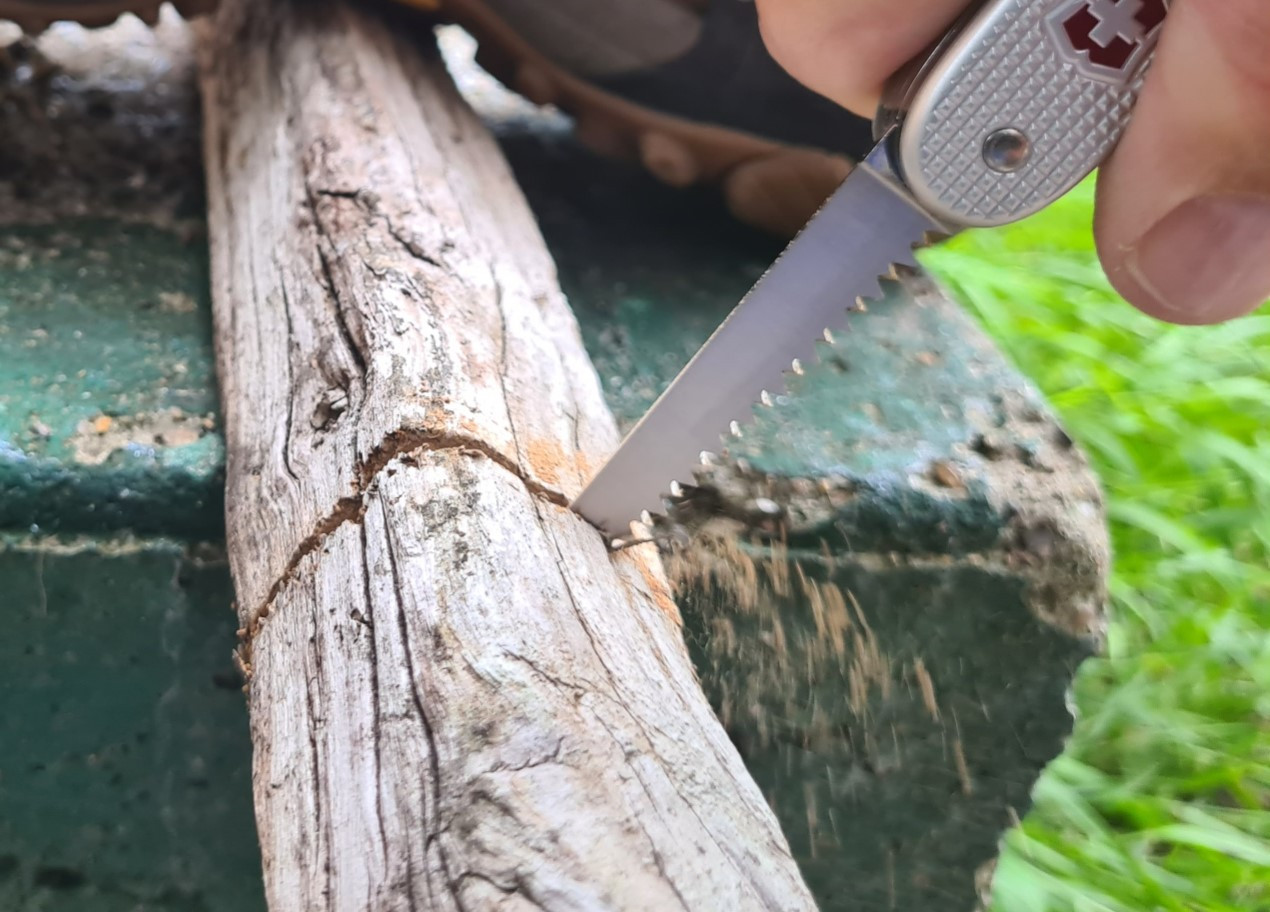 Four-layer Farmer X sawing 1.5 inch chestnut paling. This is the same saw as found on the thinner three-layer Farmer
Four-layer Farmer X sawing 1.5 inch chestnut paling. This is the same saw as found on the thinner three-layer Farmer
Victorinox Farmer X (featuring the same saw as the Farmer) cutting through a 1.5-inch chestnut paling, demonstrating the saw’s capability.
The saw on the Victorinox Farmer and Farmer X cuts on both push and pull strokes. As illustrated, it can comfortably handle diameters up to 1.5 inches in chestnut. While pushing beyond this is possible, and some users have reportedly tackled 5-inch logs, 1.5 inches represents a practical limit for comfortable use with the 2 7/8 inch (74mm) blade.
The awl/reamer on both models is genuinely sharp and designed for drilling or enlarging holes in wood. Sharp from the factory, its L-shaped profile enhances strength and facilitates easy opening. It lacks a sewing eye but can be used with a ferrocerium rod for fire starting.
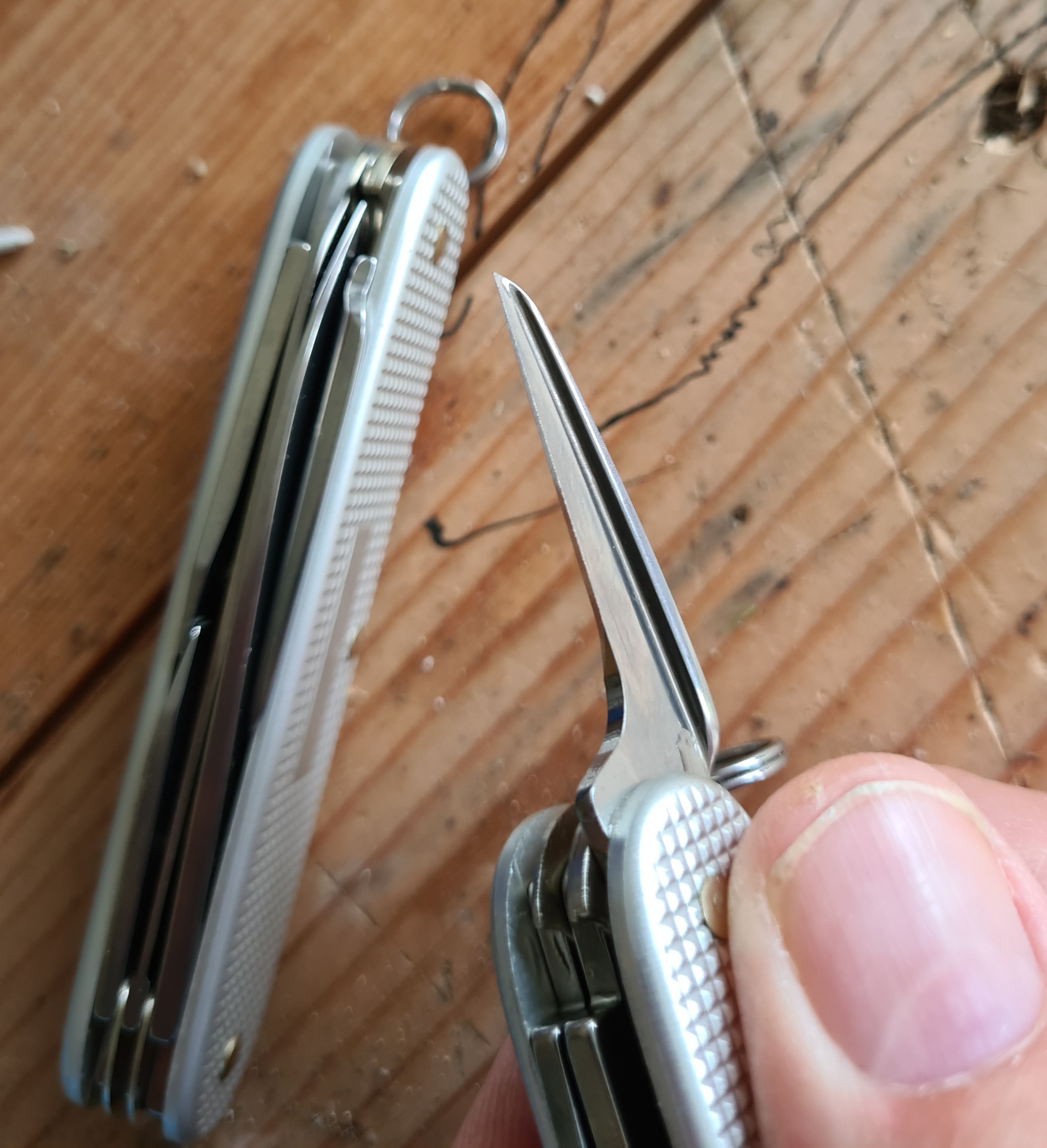 Awl/reamer on both three layer 93mm options from Victorinox
Awl/reamer on both three layer 93mm options from Victorinox
Awl/reamer tool on the Victorinox Pioneer X and Farmer, showing its sharp edge and L-shaped profile for strength and ease of use.
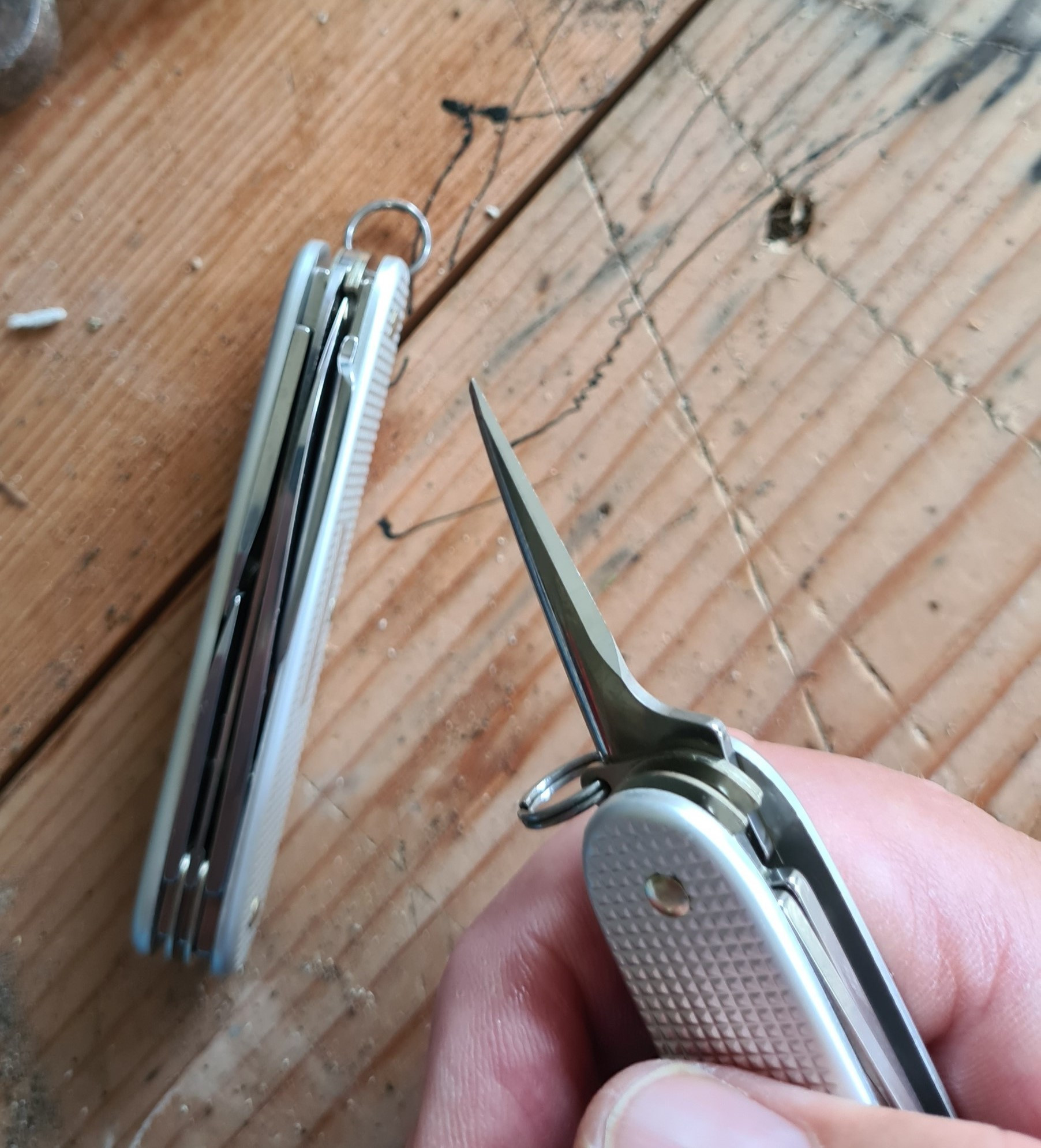 Awl/reamer on both three layer 93mm options from Victorinox
Awl/reamer on both three layer 93mm options from Victorinox
Close-up of the sharp point of the awl/reamer tool, highlighting its effectiveness for punching holes in materials like leather or fabric.
As of July 2022, the Farmer retails for around £35 in the UK, while the Pioneer X is priced approximately £10 higher. Whether this premium is justified is subjective. While seemingly expensive, both the Pioneer X and Farmer embody Victorinox’s renowned quality and offer a wide range of functionalities, providing excellent value for money. Knives with superior steel or handle materials exist, but they come at a significantly higher price point.
The distinctive Alox scales are crafted from punched aluminum, embossed, and then anodized using an eloxal (electrolytic oxidation of aluminium) process. This creates a protective, colored oxide layer that is hard, reasonably tough, and corrosion-resistant. However, this layer will wear with use and pocket carry. Keychain carry accelerates wear. While some appreciate the patina of aged Alox knives, others find it undesirable.
Although standard silver Alox is most common, occasional alternative color options have been released. These limited-edition colors, like the shown examples, often command high premiums and are difficult to find, despite offering the same toolset as the standard silver models.
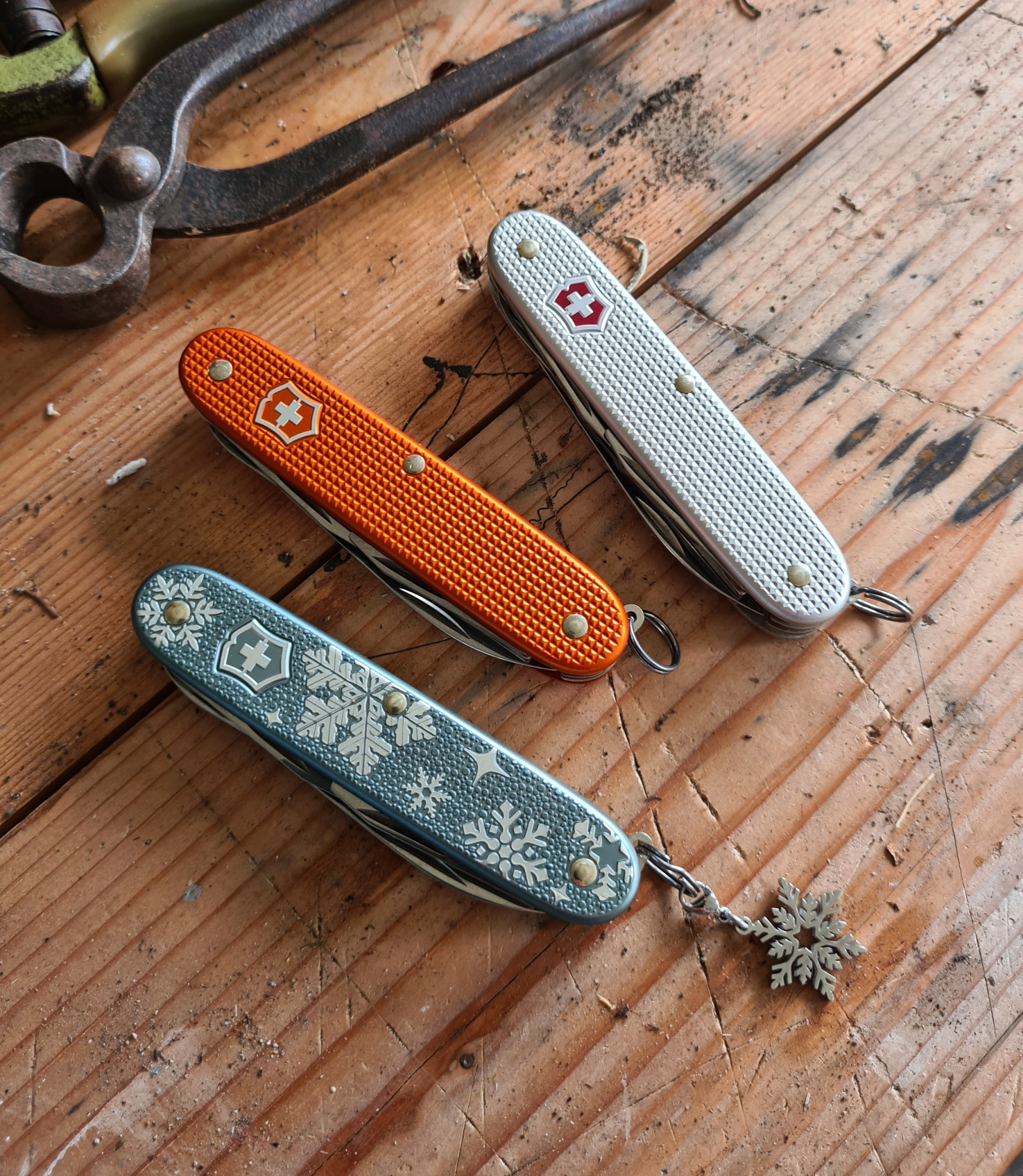 Three of the colour options for the Victorinox Pioneer X- standard silver alox, the 1921 Limited Edition, and bottom, the handsome Winter Magic Special Edition from 2020
Three of the colour options for the Victorinox Pioneer X- standard silver alox, the 1921 Limited Edition, and bottom, the handsome Winter Magic Special Edition from 2020
Color variations of the Victorinox Pioneer X Alox: standard silver, limited edition tiger orange (2021), and Winter Magic Special Edition (2020), showcasing the aesthetic variety beyond the standard model.
In Conclusion:
Both the Victorinox Pioneer X and Pioneer Farmer are attractive and highly functional knives from a respected manufacturer. The key difference lies in the additional tool each offers, making them suited to different environments. The Farmer excels in outdoor settings, ideal for woodland walks and tasks like pruning or preparing firewood. The Pioneer X, with its practical scissors, is more versatile for general EDC and urban environments. However, its size might be considered substantial for purely occasional use, and other knife or multi-tool options may be preferred for lighter carry. Nevertheless, every tool on both knives is robust and well-made, capable of enduring considerable use and even abuse. While larger and heavier than many knives previously reviewed by Three Points of the Compass has looked at, the 93mm three-layer Pioneer X and Farmer are not ideal for ultralight backpacking but remain excellent choices for general purpose and more demanding everyday carry needs.

